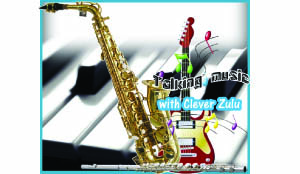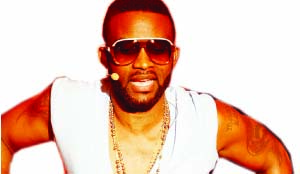 ONE of the best Rhumba maestros, Fally Ipupa, was in the country for the Valentine’s weekend and without talking about the ‘nudity’ of his dancers that were carried out in one of the papers, I have decided to share with you how Rhumba came to Africa and subsequently taking over the continent from the 50s to the late 90s.
ONE of the best Rhumba maestros, Fally Ipupa, was in the country for the Valentine’s weekend and without talking about the ‘nudity’ of his dancers that were carried out in one of the papers, I have decided to share with you how Rhumba came to Africa and subsequently taking over the continent from the 50s to the late 90s.
Soukous is a genre of dance music that originated from Cuban Rumba music in the Belgian Congo and French Congo during the 1940s and gained popularity throughout Africa.
Soukous is known as Congo in West Africa and Lingala in Kenya, Uganda and Tanzania after the Lingala language of the lyrics. In Zambia and Zimbabwe, where Congolese music is also influential, it is still usually referred to as Rumba. It mixes the kwasa kwasa with zouk and Congolese rumba.
“Soukous”, a derivative of the French word “secousse” – “to shake”- was originally the name of a dance and music popular in the Congos in the late 1960s, an African version of the Cuban Rumba.
From the 1940s, Afro-Cuban son groups such as Septeto Habanero and Trio Matamoros had been played over Radio Congo Belge in Léopoldville (Kinshasa), and the Congo shared the widespread popularity of Cuban music during the late 1940s and 1950s.
To Africans, Cuban popular music sounded familiar and Congolese bands started doing Cuban covers, singing the lyrics phonetically.
Eventually they created original compositions with lyrics in French or Lingala, a “lingua franca” of the western Congo region. The Cuban horn guajeos were adapted to guitars.
The Congolese called this new music “rumba”, though it was more based on “son”. Antoine Kolosoy, also known as Papa Wendo, became the first star of African rumba, touring Europe and North America in the 1940s and 1950s with his regular band, Victoria Bakolo Miziki.
By the 1950s, big bands had become the preferred format, using acoustic bass guitar, multiple electric guitars, conga drums, maracas, scraper, flute or clarinet, saxophones, and trumpet.
Grand Kalle et l’African Jazz (also known as African Jazz) led by Joseph Kabasele Tshamala (Grand Kalle), and OK Jazz, later renamed TPOK Jazz (Tout Puissant Orchestre Kinshasa, meaning “all-powerful Kinshasa band”) led by Franco became the leading bands.
One of the musical innovations of Franco’s band was the mi-solo (meaning “half solo”) guitarist, playing arpeggio patterns and filling a role between the lead and rhythm guitars.
In the 1950s and 1960s, some artists who had performed in the bands of Franco Luambo and Grand Kalle formed their own groups.
Tabu Ley Rochereau and Dr Nico Kasanda formed African Fiesta and transformed their music further by fusing Congolese folk music with soul music, as well as Caribbean and Latin beats and instrumentation.
They were joined by Papa Wemba and Sam Mangwana, and classics like Afrika Mokili Mobimba made them one of Africa’s most prominent bands.
Congolese “rumba” eventually evolved into soukous. Tabu Ley Rochereau and Dr Nico Kasanda are considered the pioneers of modern soukous.
Other greats of this period include Koffi Olomide, Tshala Muana and Wenge Musica.
While the rumba influenced bands such as Lipua-Lipua, Veve, TP OK Jazz and Bella Bella, younger Congolese musicians looked for ways to reduce that influence and play a faster paced soukous inspired by rock n roll.
A group of students called Zaiko Langa Langa came together in 1969 around founding vocalist Papa Wemba.
Pepe Kalle, a protégé of Grand Kalle, created the band Empire Bakuba together with Papy Tex and they too became popular.
Soukous now spread across Africa and became an influence on virtually all the styles of modern African popular music including highlife, palm-wine music, taarab and makossa. As political conditions in Zaire, as Congo DRC was known then, deteriorated in the 1970s, some groups made their way to Tanzania and Kenya.
By the mid-seventies, several Congolese groups were playing soukous at Kenyan night clubs.
The lively cavacha, a dance craze that swept East and Central Africa during the seventies, was popularised through recordings of bands such as Zaiko Langa Langa and Orchestra Shama
Shama, influencial Kenyan musicians.
This rhythm, played on the snare drum or hi-hat, quickly became a hallmark of the Congolese sound in Nairobi and is frequently used by many of the regional bands.
Several of Nairobi’s renowned Swahili rumba bands formed around Tanzanian groups like Simba Wanyika and their offshoots, Les Wanyika and Super Wanyika Stars.
In the late 1970s Virgin records produced LPs from the Tanzanian-Congolese Orchestra Makassy and the Kenya-based Super Mazembe.
One of the tracks from this album was the Swahili song Shauri Yako (“it’s your problem”), which became a hit in Kenya, Tanzania and Uganda.
Les Mangelepa was another influential Congolese group that moved to Kenya and became extremely popular throughout East Africa.
About this same time, the Nairobi-based Congolese vocalist Samba Mapangala and his band Orchestra Virunga, released the LP Malako, which became one of the pioneering releases of the newly emerging world music scene in Europe.
The musical style of the East Africa-based Congolese bands gradually incorporated new elements, including Kenyanbenga music, and spawned what is sometimes called the “Swahili sound” or “Congolese sound”.
Soukous became popular in London and Paris in the 1980s.
A few more musicians left Kinshasa to work around central and east Africa before settling in either the UK or France.
The basic line-up for a soukous band included three or four guitars, bass guitar, drums, brass, vocals, and some of them having over 20 musicians.
Lyrics were often in Lingala and occasionally in French.
In the late 1980s and 1990s, Parisian studios were used by many soukous stars, and the music became heavily reliant on synthesisers and other electronic instruments.
Some artists continued to record for the Congolese market, but others abandoned the demands of the Kinshasa public and set out to pursue new audiences.
Some, like Paris-based Papa Wemba maintained two bands,Viva La Musica for soukous, and a group including French session players for international pop.
Kanda Bongo Man, another Paris-based artist, pioneered fast, short tracks suitable for play on dance floors everywhere and popularly known as kwassa kwassa after the dance moves popularised by his and other artists’ music videos.
This music appealed to Africans and to new audiences as well. Artists like Diblo Dibala, Jeannot Bel Musumbu, Mbilia Bel, Yondo Sister, Tinderwet, Loketo, Rigo Star, Madilu System, Soukous Stars and veterans like Pepe Kalle and Koffi Olomide followed suit.
Soon Paris became home to talented studio musicians who recorded for the African and Caribbean markets and filled out bands for occasional tours.
The fast soukous music currently dominating dance floors in central, eastern and western Africa is called soukous ndombolo, performed by Dany Engobo, Awilo Longomba, Aurlus Mabele, Koffi Olomide and groups like Extra Musica and Wenge Musica among others.
The hip-swinging dance to the fast pace of soukous ndombolo has come under criticism amid charges that it is obscene.
There have been attempts to ban it in Mali, Cameroon and Kenya. After an attempt to ban it from state radio and television in the Democratic Republic of the Congo in 2000, it became even more popular.
In February 2005, ndombolo music videos in the DR Congo were censored for indecency, and video clips by Koffi Olomide, JB M’Piana and Werrason were banned from the airwaves.
For comments and contributions; email- cleverzulu21@zambia.co.zm or SMS 0955 388 441






